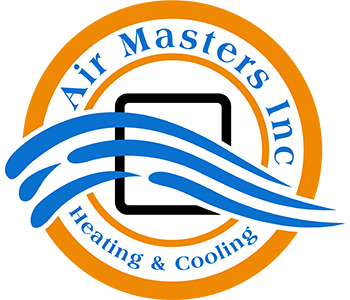
A furnace is almost always a background player for your home, helping keep you warm during the cold winter months. It often isn't noticed until something breaks down.
One source might be that your furnace has a cracked heat exchanger. It can be a safety risk, so it’s worthwhile to know the symptoms of a cracked heat exchanger and what to do if you are worried that may be the problem.
What Is a Heat Exchanger in a Furnace?
A heat exchanger helps move heat from the combustion chamber in your furnace to the air that circulates throughout the system. It generally handles this with coils or tubes that heat the air while acting as a barrier to keep gas created in the combustion chamber, called flue gasses, from escaping out into your home.
Is a Cracked Heat Exchanger Dangerous?
Thanks to its key role, it’s no surprise that a damaged heat exchanger can be very dangerous. Cracks in the heat exchanger can permit dangerous gasses – like carbon monoxide, which can be lethal – to circulate across your home.
For this reason, do NOT turn on your heating if you think it has a cracked heat exchanger, as this could make the entire household ill. Reach out to an HVAC professional immediately if you think your heating has a cracked heat exchanger that needs repair.
Four Warning Signs of a Cracked Heat Exchanger:
- Furnace switches off: A crack in your heat exchanger could cause your furnace to turn off.
- Unusual Smells: If the air leaving your furnace has an intense chemical smell, it could be evidence gasses are leaking through cracks in your heat exchanger. These gasses, which can smell like formaldehyde, are a significant warning sign.
- Carbon monoxide alarm goes off or you recognize symptoms of poisoning: If a cracked heat exchanger is releasing carbon monoxide into your home, your carbon monoxide alarm may go off or household members could struggle with signs of carbon monoxide poisoning. Symptoms include headaches, dizziness, weakness, nausea, vomiting or feeling tired. If an alarm goes off or you feel unwell, exit the home right away and then call for help.
- Soot: If you see black sooty buildup around the exterior of your furnace, it’s another sign something might be seriously wrong.
What to Do if a Furnace Heat Exchanger is Cracked
If you believe your furnace has a cracked heat exchanger, hire a professional well versed in furnace installation Port Orchard as soon as possible so they can take a look at your system and, if necessary, handle a furnace heat exchanger replacement. Costs will vary depending on the situation, but estimates often hover around $1,000 to $3,000.
However, the good news is that heat exchangers are regularly included in the warranty. It's a good idea to check the warranty paperwork on your furnace, since while the warranty won't always cover the entire cost of repairs, it could significantly shrink your bill.
How to Prevent a Cracked Heat Exchanger in Your Home
One of the easiest ways to minimize the risk of problems in your furnace overall is with routine furnace maintenance. Furnaces provide the best possible return on investment when they work efficiently. Contacting a certified professional to examine your furnace for worn-out parts, clogs in the air filters and other common problems can keep you from getting a big bill later on.
It’s also helpful to inspect your furnace filters every few months – it’s recommended some filters be changed every 90 days or sooner if they are dirty or grimy. While the filters aren't a part of the heat exchanger itself, the strain of pulling air through a clogged filter makes the entire furnace work longer to accomplish its job. And the harder your furnace has to work, the more deterioration pieces like the heat exchanger will experience.

